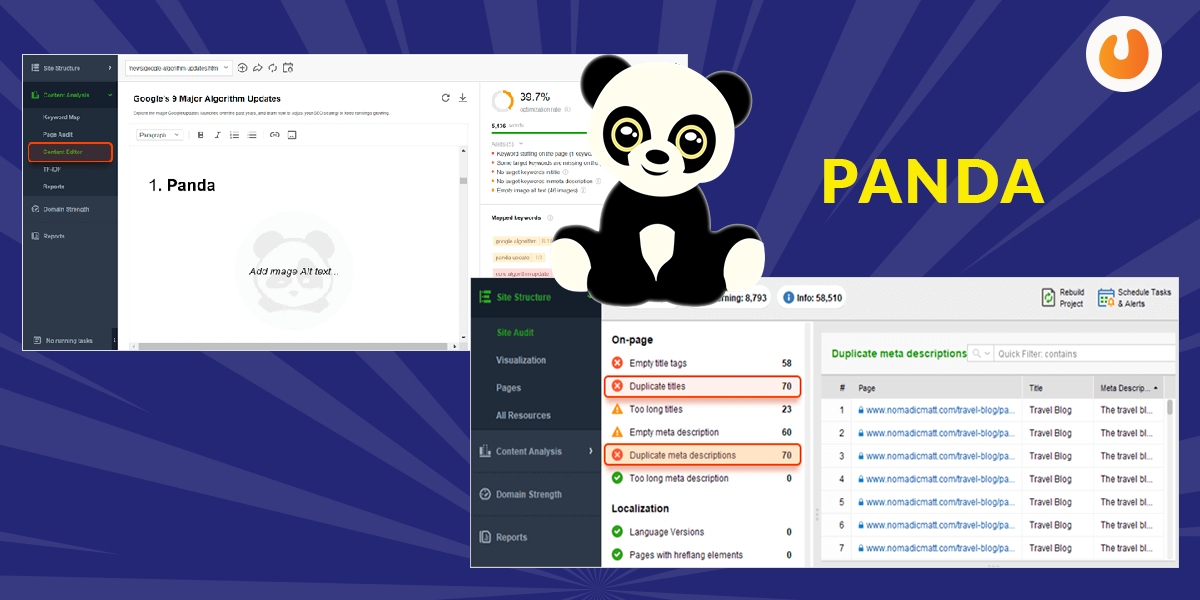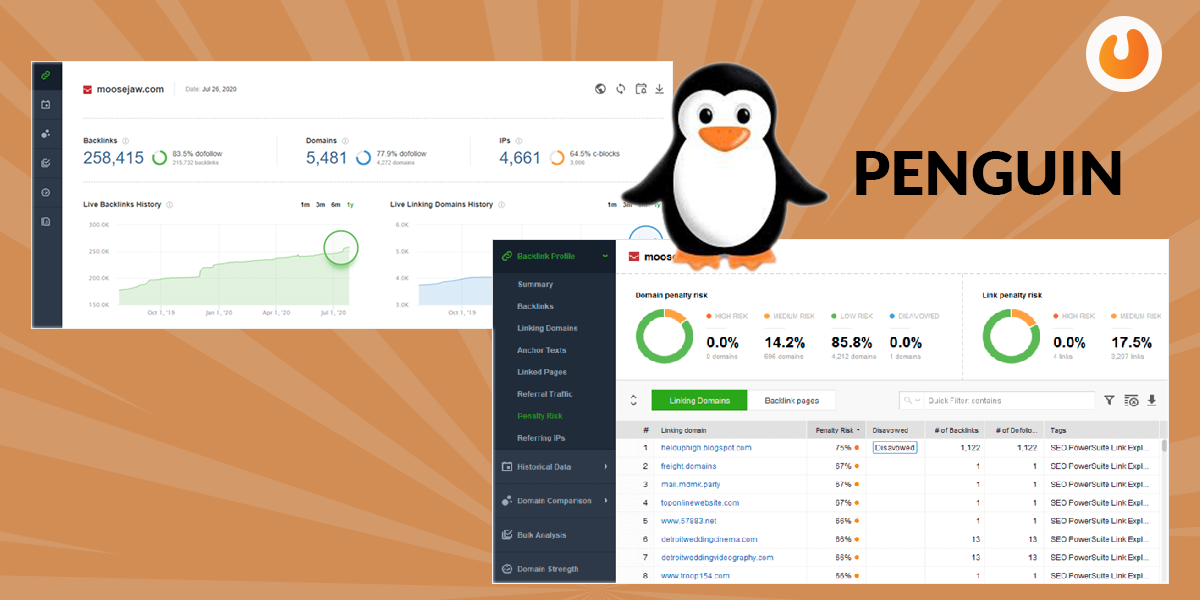Google is known to update its search algorithm every now and then and has been doing the same for a long time now. Generally, these updates are small and not noticed easily by the users but, in some cases, Google introduces a change so fundamental that it changes the way we perceive the way we do SEO in general.
Google algorithm update is not a small process as it requires a brief study. Google SEO algorithm update history each year suggests that it makes hundreds of Search changes. In the year 2018, they reported an incredible 3,234 updates, an average of almost 9 per day, and these numbers were more than eight times the number of updates made in 2009.
In this post, we have pinned down 8 major Google algorithm for SEO updates that users should know. We will be discussing why these updates were introduced, how they work, and what is their functionality. So without any further ado, let us start with the compilation of the major Google Algorithm updates.
Panda
Panda came into existence on February 24, 2011.
Hazards: Duplicate, plagiarized, or thin content; user-generated spam; keyword stuffing.

Working: The Panda algorithm update keeps a track of your quality score that is used as a ranking factor for your website and eventually helps in boosting the rankings.
At the time of its launch, Panda wasn’t that impactful, but come January 2016, Panda got incorporated into Google’s core algorithm. Since then, regular updates are witnessed in Panda’s algorithm, and it has become a core algorithm of Google now.
How to make adjustments: You need to run regular checks for content duplication, keyword stuffing, and also thin content. To do this, a site crawler is a must. There are many site crawlers available, but here I am choosing SEO PowerSuite’s Website Auditor.
Also, Read – Role and Importance of Page Speed SEO Checker
The Website Auditor’s new content editor module allows you to create pages without the risk of accidental keyword stuffing. The ‘content editor’ option analyzes the pages of your top competitors and provides the essential SEO recommendations based on the content that’s already successful in Google search.
Hummingbird
The second SEO algorithm in the list is Hummingbird, launched on August 22, 2013.
Hazards: Low-quality content, Keyword stuffing
How to make adjustments: Hummingbird helps Google better interpret search queries and provide results that match the searcher’s intent. One of the USPs of Hummingbird is, it can rank a web page for a query even if it doesn’t contain the exact word the searcher entered. All this is possible with NLP i.e. Natural Language Processing.

How to make adjustments: You need to carefully analyze keyword research and analyze related searches, synonyms, and co-occurring terms. You can dive into Google Related Searches and Google Related Questions, and Google Autocomplete Suggestions as they are the best sources for such ideas.
Penguin
Penguin was launched on April 24, 2012.
Hazards: Link with over-optimized anchor text, spammy, or irrelevant links.

Working: The only objective of Penguin is to down-rank sites whose backlinks don’t look impressive. Ever since this algorithm came into existence, it put an end to low-effort link building, like buying links from link farms and PBNs.
How to make adjustments: You need to monitor your link profile’s growth and run regular audits with a backlink checker. You can use SEO SpyGlass as the backlink checker.
Go to the Summary dashboard option in the Tool, and you will find a progress graph for your link profile’s growth. Here, you can check any unusual spikes that might be the result of a negative SEO attack done by your competitors.
Mobile
Next on the list is Mobile that got launched on April 21, 2015.
Hazard: Poor mobile usability, lack of a mobile version of the page
Working: With people using the internet more on their smartphones rather than laptops or PCs, the Google Search updates shifted their focus from a desktop to a mobile version of your website or web page.
How to make adjustments:
You need to optimize your pages for mobile search and also keep an eye on its speed and usability. Google page speed test will help you see which aspect of your page needs to be improved.
These tests are integrated into WebSite Auditor that lets you check your pages’ mobile optimization aspect as a part of your overall website audit. This can be found in Content Analysis>Page Audit.
RankBrain
Rankbrain was introduced on October 26, 2015.
Hazards: Shallow content, Poor UX, Lack of query-specific relevance
Working: Ranbkbrain is a part of Google’s successful Hummingbird algorithm. It is considered the third most important ranking factor. Rankbrain is a machine learning system that is responsible for customizing a user’s Google search result and lets Google understand the meaning behind queries and serve best-matching search results in response to queries.
How to make adjustments: You can optimize your pages for relevance and comprehensiveness with the help of competitive analysis. The WebSite Auditor’s TF-IDF tool can be used to discover entire lists of relevant terms and concepts that can be used by a large number of your top-ranking competitors.
Medic
Medic was launched two years back on May 4, 2018.
Hazard: Weak E-A-T signals, lack of authority on YML websites
Working: Medic’s working was disproportionately affecting medical websites and other websites as well. Although not confirmed explicitly, the Google representatives have made updates of some of the E-A-T signals from the quality rater guidelines document.
How to make adjustments: There is no proven recovery strategy so far to defy the Medic algorithm. But, you can still try growing your backlink profile to increase the authority of your website.
BERT
BERT got into existence on October 22, 2019.
Hazards: Lack of focus, lack of context, and poorly written content
Working: Bert uses NLP to understand the interpret text, search queries, identify entities, and the relationship between the entities. Earlier this month, Google announced that BERT is now used on almost every English query in its latest adjustment.
How to make adjustments: With the Googe BERT algorithm in the latest SEO updates, it is clear that Google is finally rewarding quality writing. So from now on, you cant be lenient on grammar, sentence framing in the entire content.
Core Updates
Instigated in 2017, the Core Updates are still among the best algorithms of Google.
Working: Since 2017, Google has started to refer to the bigger updates as core updates. Since then, there is less transparency about the meaning of those updates and what they are. However, SEO often tracks post-update rankings shifts and tries to find out what exactly has changed.
How to make adjustments: In this case, you can track SERP history for the keywords you tend to target. Once the update is done, you can easily check which of your competitors have moved up or down in the rankings. You can use Rank Tracker to perform this check.
Conclusion: Here are the eight major Google algorithm updates one should be aware of. Your content will be optimized according to these algorithms. So it is better to follow these, and your website tranking will boost up quickly.


 | 500+ Customer from BMBS to Fortune 500 companies
| 500+ Customer from BMBS to Fortune 500 companies






